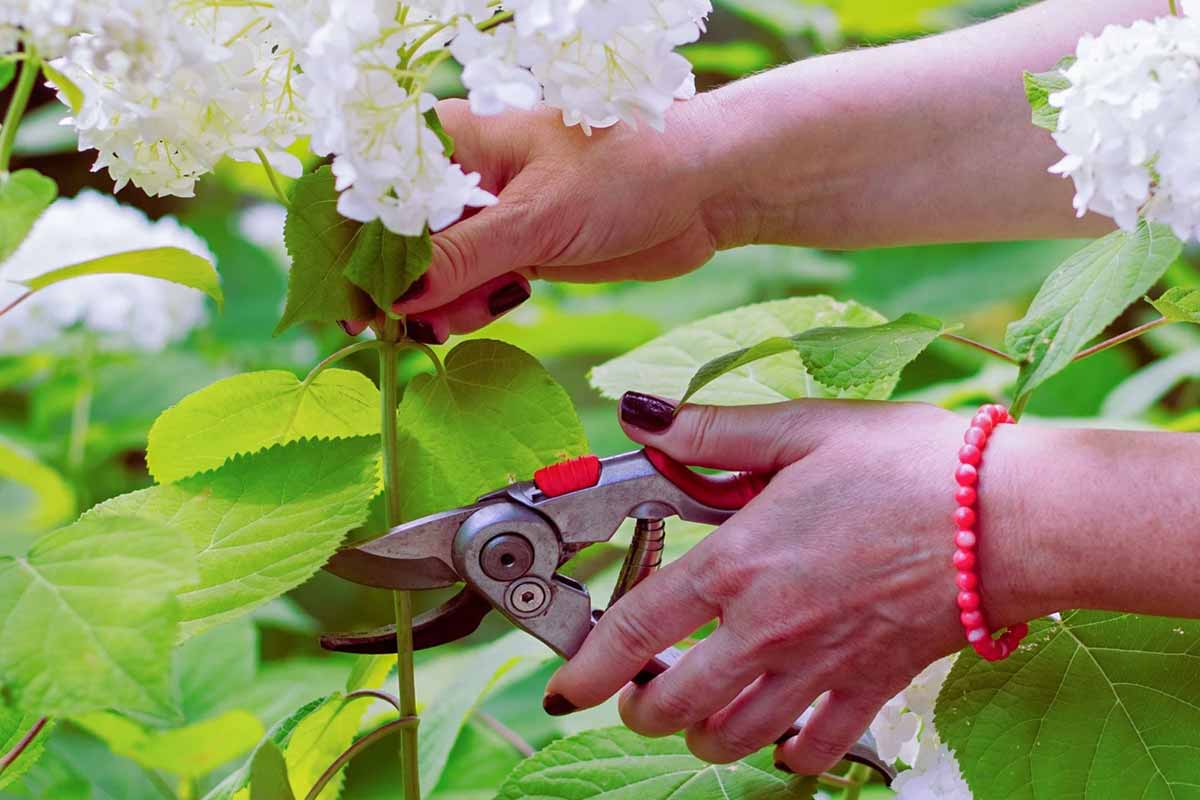A few cool nights change everything, and Hydrangeas suddenly look spent while stems still hold promise. Fall invites tidy hands, yet timing shapes next year’s color. Wood type, dormancy, and climate decide your moves, so you avoid cutting off spring buds. Use simple checks, then act with purpose. With the right cuts, you guide growth, reduce disease, and set up stronger blooms. Keep tools clean, watch frost dates, and choose careful steps.
Know Your Hydrangeas: wood type sets the rules
New wood or old wood determines when flowers form, because buds arise on different season’s growth. New wood forms in spring; old wood forms the prior year. Identify your shrub first, then plan your window. Dormancy also matters, since safe structural pruning starts only after growth stops.
Panicle hydrangea, Hydrangea paniculata, carries large cone blooms on new wood. Smooth hydrangea, Hydrangea arborescens, also blooms on new wood and shows round snowball heads. Both accept harder pruning after dormancy, which usually follows first frost. Because they reset buds on new growth, stronger cuts still bring flowers.
Mophead hydrangea, Hydrangea macrophylla, sets pink, purple, or blue blooms on old wood. Oakleaf hydrangea, Hydrangea quercifolia, shows lobed leaves like oak and cone flowers on old wood. Old-wood bloomers keep next season’s buds through winter. Cuts in fall remove those buds, so restraint protects spring displays.
Timing across zones and dormancy
New-wood shrubs allow broader timing, because their buds form later. Prune when dormant in late winter or very early spring, then shape lightly in fall only for spent heads and balance. Stop once steady freezes loom, since tender cuts before dormancy can stress tissues and invite dieback.
Old-wood bloomers demand a narrow window. Cut right after flowering in late spring or summer, then stop by the end of August. Fall cuts remove next year’s flower stems, so plants green up without color. The rule sounds strict because buds rest all winter on last season’s wood.
Timing decides bloom or silence, and Hydrangeas prove the point. Many “non-bloomers” were pruned off-schedule. Remove the stems that hold next year’s buds and you keep only leaves. Let the plant go dormant before hard work on new-wood types, and keep old-wood shaping right after bloom.
Shaping new-wood shrubs without losing spring displays
During the growing season, deadhead panicle and smooth types as flowers fade, because that extends overall blooming. Clip dry heads to a strong pair of leaves, and keep cuts small. This preserves energy while the plant still pushes new wood, which later sets the buds you want.
Late summer and fall allow light shaping on new-wood shrubs, although restraint helps. Remove overgrown branches that crowd paths, then thin tangled tips to maintain balance. Keep structure open so air moves through. Because light enters evenly, stems ripen better, while interior leaves dry faster after rain.
Hard pruning waits for dormancy, then removes about one-third of total mass. Take more only if the shrub outgrew its space, since deeper cuts reduce spring and summer flowers. Make clean angles that shed water, then finish with a quick hygiene check. Hydrangeas respond with vigorous shoots on fresh wood.
Advanced care metrics for Hydrangeas: cuts, buds, and air flow
Old-wood bloomers prefer minimal work. Deadhead right after flowers fade, and snip near the base of the blossom with by-pass clippers. Summer suits this best, while very early fall still works for spent heads only. Because buds for next year already exist, deeper pruning waits until after flowering.
Remove broken limbs as soon as you spot them, since cracks invite disease. In early spring, inspect for winter damage and trim dead tips. Slice a suspect stem and check the pith, because live buds show green inside while dead wood looks brown. Cut back to living tissue that carries firm buds.
Heavy reductions on old-wood types happen only right after bloom. Do not prune later than the end of August, and avoid taking more than one-third of total mass. Exceed those limits and the shrub may skip flowers for two years. Keep structure airy so light reaches inner leaves and buds.
Four smart safeguards when size and health raise concerns
When a shrub outgrows its space, transplant rather than amputate. Choose a site with the room it needs, because repeated hard cuts weaken shape. Move it when soil is workable and root ball holds together. Water well after, then mulch, since steady moisture reduces stress during recovery.
Improve air circulation by removing entire stems that clog the center. Open structure lowers leaf spot risk, while breezes dry foliage after rain. Check stems in early spring for winter-killed tips and retest with the green-inside rule. Because airflow and light move together, you also ripen wood more evenly.
Make pruning cuts a quarter inch above the first set of live buds to protect recovery. That small gap prevents dieback from reaching the bud pair. In fall, beyond removing dried heads, keep hands off until dormancy after first frost. Hydrangeas reward that patience with tighter bud sets and fuller clusters next season.
Simple steps now, abundant color when warm days return
Clear goals, steady timing, and clean cuts do more than tidy stems; they script next season’s show. Respect wood type, then match pruning to dormancy, because buds follow that calendar. With small fall cleanups, measured winter work, and patient restraint on old-wood types, Hydrangeas answer with bigger, brighter flowers.
